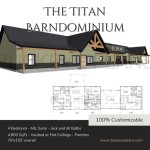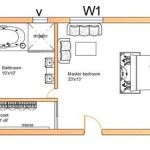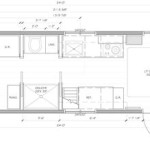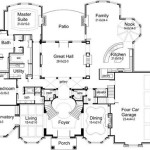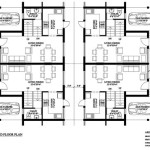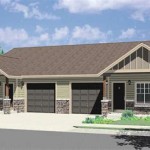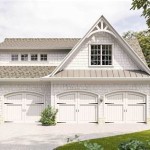2 Bedroom Mother-In-Law Suite Floor Plans
Multigenerational living is becoming increasingly common, driving demand for flexible housing solutions like mother-in-law suites. These suites, also known as accessory dwelling units (ADUs) or granny flats, offer independent living spaces within or adjacent to a primary residence. For families seeking to accommodate aging parents or other relatives, a 2-bedroom mother-in-law suite provides ample space and privacy.
Designing a functional and comfortable 2-bedroom mother-in-law suite requires careful planning. The floor plan should consider the specific needs of the occupants, including accessibility, privacy, and convenience. This article will explore various aspects of 2-bedroom mother-in-law suite floor plans.
Size and Layout Considerations
The size of a 2-bedroom mother-in-law suite can vary significantly depending on available space and budgetary constraints. Smaller suites may range from 500 to 700 square feet, offering a compact yet functional living space. Larger suites can exceed 1,000 square feet, providing more room for comfortable living and accommodating potential caregivers.
The layout should prioritize accessibility and ease of movement. Open floor plans, where the kitchen, dining, and living areas flow seamlessly, can create a sense of spaciousness and facilitate interaction. However, some individuals may prefer distinct, separate rooms for privacy.
Bedroom Placement and Features
Two bedrooms provide flexibility for accommodating couples, siblings, or a live-in caregiver. Ideally, bedrooms should be located away from high-traffic areas for maximum tranquility. Each bedroom should have ample closet space and easy access to a bathroom. Consider incorporating features like built-in wardrobes and larger doorways to accommodate mobility aids if necessary.
Bathroom Design for Accessibility
Bathroom design is crucial for ensuring safety and comfort, especially for older adults. Features like walk-in showers, grab bars, and non-slip flooring are essential for promoting accessibility and reducing the risk of falls. The bathroom layout should allow for easy maneuverability with wheelchairs or other mobility devices.
Kitchen and Dining Area Functionality
The kitchen and dining area should be designed with both functionality and accessibility in mind. Lower countertops and adjustable shelving can make it easier for individuals with limited mobility to prepare meals. Consider incorporating appliances like dishwashers and microwaves to simplify daily tasks. A comfortable dining area provides space for family meals and social interaction.
Living Area Comfort and Flexibility
The living area serves as the central gathering space within the suite. It should be designed for comfort and relaxation, with ample natural light and comfortable seating. Consider incorporating features like a fireplace or entertainment center to create a welcoming and enjoyable space.
Incorporating Outdoor Spaces
Access to outdoor spaces can greatly enhance the quality of life for occupants of a mother-in-law suite. A patio, deck, or small garden can provide a place for relaxation, fresh air, and gardening activities. Consider the accessibility of these outdoor spaces, ensuring easy access for individuals with mobility limitations.
Connection to the Main House
The connection between the mother-in-law suite and the main house is an important consideration. Some families prefer a completely separate entrance for maximum privacy, while others may opt for a connecting door for easy access. The level of connection should be determined based on the specific needs and preferences of the families involved.
Detached vs. Attached Suites
Mother-in-law suites can be either attached to the main house or detached as a separate structure. Attached suites offer the convenience of shared utilities and easy access, while detached suites provide greater privacy and independence. The choice between attached and detached suites depends on factors such as available space, budget, and desired level of privacy.
Legal and Zoning Considerations
Before building a mother-in-law suite, it is crucial to research local zoning regulations and building codes. Requirements for permits, setbacks, and building size can vary significantly depending on the jurisdiction. Consulting with local authorities and obtaining the necessary permits is essential to ensure compliance with all applicable regulations.
Budgeting and Financing
Building a mother-in-law suite can be a significant investment. Careful budgeting and planning are essential to manage costs effectively. Explore various financing options, such as home equity loans or construction loans, to determine the most suitable approach for your financial situation.
Working with Professionals
Designing and building a mother-in-law suite can be a complex process. Working with experienced professionals, such as architects, contractors, and interior designers, can ensure a successful outcome. These professionals can provide valuable guidance on design, construction, and regulatory compliance.
Universal Design Principles
Incorporating universal design principles into the floor plan can create a more accessible and adaptable space. Universal design features, such as wider doorways, lever-style door handles, and adjustable shelving, benefit individuals of all ages and abilities, ensuring long-term usability and adaptability.

In Law Suite House Floor Plans Mother Apartment

Mother In Law Suite Floor Plans Garage Apartment

Mother In Law Suite Floor Plans Basement House

Pin By Maria Norman On Home Ideas House Plans In Law Apartment Small Layout

Traditional Home With Mother In Law Suite 35428gh Architectural Designs House Plans

Mother In Law Suite Basement House Plans Modern Style

Homes With Mother In Law Suites

Designing And Building New Homes With Mother In Law Suites David Weekley

Mother In Law Cottage Suite Apartment Floor Plans

Homes With Mother In Law Suites
Related Posts

